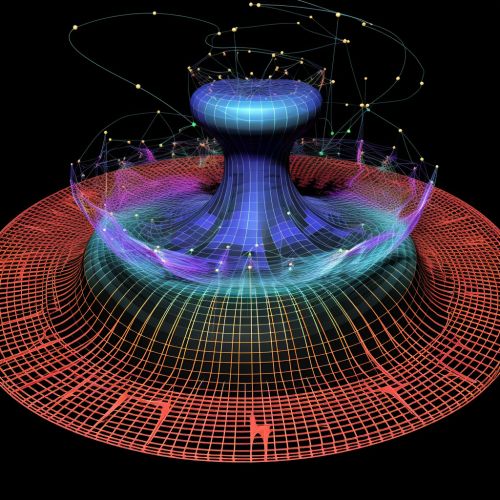AdS/CFT Correspondence
Introduction
The AdS/CFT correspondence, also known as the Maldacena duality, is a conjecture in theoretical physics that relates two seemingly different theories: the quantum gravity theory in Anti-de Sitter (AdS) space and a Conformal Field Theory (CFT) in one fewer dimension. This correspondence was first proposed by Juan Martín Maldacena in 1997 and has since become a central tool in the study of quantum gravity, particularly in the context of string theory.


Anti-de Sitter Space
Anti-de Sitter space is a maximally symmetric, negatively curved space that is a solution to Einstein's field equations with a negative cosmological constant. It is named after Dutch physicist Willem de Sitter, despite being the "opposite" of the de Sitter space he originally studied, which has positive curvature. In the context of the AdS/CFT correspondence, the AdS space is often referred to as the "bulk" or "gravity side" of the duality.
Conformal Field Theory
A Conformal Field Theory (CFT) is a quantum field theory that is invariant under conformal transformations, which include scaling, rotations, and translations. CFTs are particularly important in the study of critical phenomena in statistical mechanics, as well as in string theory. In the AdS/CFT correspondence, the CFT is often referred to as the "boundary" or "field theory side" of the duality.
The Correspondence
The AdS/CFT correspondence posits that a quantum gravity theory in an (n+1)-dimensional AdS space is exactly equivalent to a conformal field theory on the n-dimensional boundary of that space. This is a type of "holographic" principle, suggesting that all the information about the bulk theory can be encoded on its boundary.
One of the most significant implications of this correspondence is that it provides a non-perturbative definition of quantum gravity. In other words, it allows for the calculation of quantum gravity effects that are not small perturbations around a classical solution.
Applications
The AdS/CFT correspondence has found numerous applications in theoretical physics. It has been used to study the thermodynamics of black holes, the behavior of quark-gluon plasmas in quantum chromodynamics, and the properties of condensed matter systems, among other things.
